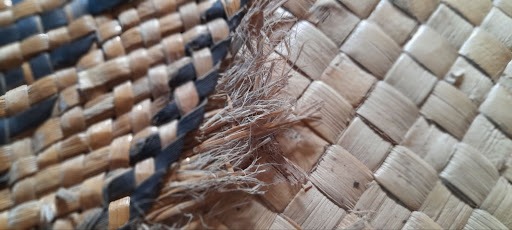Kuta: the renowned reed mats of Vanua Levu, Fiji’s second largest island



Fiji has a unique traditional skill that differs according to each province or tikina (district), the art of mat weaving. Similar to how the middle east is renowned for its rugs, mats are a traditional speciality for Fijian women and perhaps in other parts of the Pacific as well. The Kuta (Coo-tah), a mat from the provinces of Macuata and Bua in Vanua Levu, Fiji’s second island, distinguishes its people from the rest of Fiji.
Kuta mat comes from the dried leaves of the sedge plant family, the Eleocharis dulcis species (sci.name). The Eleocharis dulcis or Freshwater reed in English, grows in wetlands and is indigenous to parts of tropical West Africa, South Asia, northern Australia and Western Pacific. It is also cultivated in Hawaii, which blurs the line between aboriginal and introduced species in the Pacific, as trade was a part of life in pre-European times. Three species of this plant exist in Fiji, all used for mat weaving.
Plentiful near ponds and wetlands, Kuta harvesting is a delicate task, and it begins by taking a handful of green Kuta stalks that are clear of any spots or flowers. Holding it clear above water, move your hand to the root of the stalks and gently pull the stalks out of the water. The stalks, now gathered in bundles, are taken back to the village to be dried.

Intricate Kuta weaving (left) compared to a normal mat.
Unlike other Fijian mats made of Voivoi (pandanus leaves), Kuta cannot withstand washing, but it is simply dried due to its brittle and vulnerable texture. After drying, it is then flattened (wawalui) to smooth out any knots before weaving. Before today’s provincial boundaries, parts of Cakaudrove province also shared this particular skill, and some districts (tikina) continue to do so today.
Kuta mats are finer, more detailed and softer than other mats. It is considered one of the finest mats and is usually placed on the top (vakamalumu) of a pile of mats (vivivi) laid out for an occasion. The colouring of Kuta mats consists of only brown and black, usually lacking any bright modern colours. According to the Fijian anthropologist Ronald Gatty, reed mats found at the Sigatoka sand dunes date back to about 2000 years ago.
Due to agriculture and pine forestry expansion in Vanua Levu, conservation projects dedicated to Kuta preservation have been introduced to safeguard wetlands and ponds. When you do get to Vanua Levu, specifically Macuata, do not hesitate to ask the women about anything Kuta related, who play a key role in these preservation projects.
